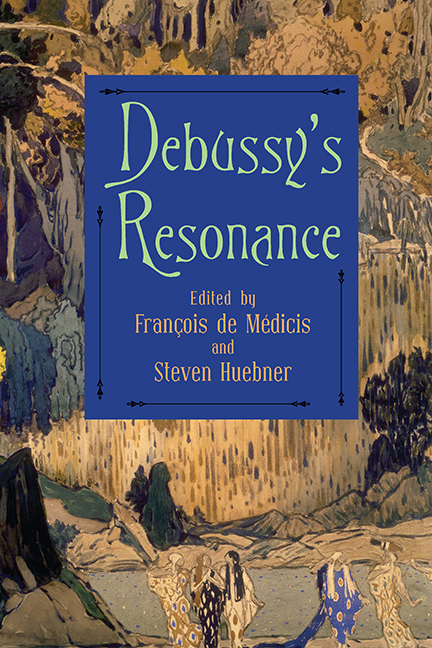Book contents
- Frontmatter
- Contents
- List of Illustrations
- Acknowledgments
- List of Abbreviations
- Introduction
- Part One Historiographical and Editorial Issues
- Part Two Style and Genre
- Part Three History and Hermeneutics
- 10 Debussy and Japanese Prints
- 11 “Les sons … tournent”: Debussy, the Waltz, and Embodied Hermeneutics
- 12 Secrets and Lies, or the Truth About Pelléas
- 13 Vertige!: Debussy, Mallarmé, and the Edge of Language
- Part Four Theoretical Issues
- Part Five Performance and Reception
- List of Contributors
- Index
12 - Secrets and Lies, or the Truth About Pelléas
from Part Three - History and Hermeneutics
Published online by Cambridge University Press: 27 July 2019
- Frontmatter
- Contents
- List of Illustrations
- Acknowledgments
- List of Abbreviations
- Introduction
- Part One Historiographical and Editorial Issues
- Part Two Style and Genre
- Part Three History and Hermeneutics
- 10 Debussy and Japanese Prints
- 11 “Les sons … tournent”: Debussy, the Waltz, and Embodied Hermeneutics
- 12 Secrets and Lies, or the Truth About Pelléas
- 13 Vertige!: Debussy, Mallarmé, and the Edge of Language
- Part Four Theoretical Issues
- Part Five Performance and Reception
- List of Contributors
- Index
Summary
Let us begin at the end: with the single scene that makes up act 5 of Pelléas et Mélisande. Of all the incongruities that trouble Debussy's opera, those of the final act are somehow the most troubling. No other scene offers such a diverse assortment of characters, voices, points of view: Arkel, Golaud, le médecin, Mélisande. Peering into a bedroom of the castle, we watch the resident sage, his aggrieved grandson, and a doctor doling out prescriptions for a dying princess, alongside an unexplained newborn and several silent female attendants. What are they doing here? The unlikely figures crowd both the stage and the plot, vying for our attention and derailing the dénouement. The bourgeois melodrama has taken a dramatically wrong turn. In the previous act the cuckolded Golaud kills Pelléas right on cue, but the story refuses to stand in judgment. By the end of act 5 the domestic tragedy has become a ghost story. When death finally brings the action to a halt, it is no one's fault, and yet the equivocal ending mocks as much as it moves us. The scene's obstinate plea, “Il faut dire la vérité” (You must tell us the truth), goes unanswered. Right to the end, the play has held its tongue.
The plea for truth belongs, of course, to Golaud, the opera's most miserable character, but it might as well be our own. Judging from the controversial reception of the very first Pelléas, it seems that Debussy's audiences had just as much trouble deciphering the opera's meaning, and a century of performances has hardly made things easier. We still struggle to comprehend Mélisande's veiled actions. Like Golaud, we wonder why she lies, and why she dies. Chalk it up to mystery, the guidebooks tell us, but that does not solve the problem. For Pierre Boulez, to call Pelléas a “mystery” is simply to skip all the hard work, to substitute (as he puts it) a “flat, soothing, modest, and moreover simpleminded image” for a real explanation. Debussy did not shrink from the drama's contradictions. Why should we?
Indeed, Debussy may have added to those contradictions when he made his well-known cuts to Maeterlinck's original play. As if taking a cue from Mélisande, he left out a few key elements of the story, in effect concealing them from his operatic audience.
- Type
- Chapter
- Information
- Debussy's Resonance , pp. 353 - 365Publisher: Boydell & BrewerPrint publication year: 2018



